Giovedì 12 ottobre alle ore 15:00, il Dr. Sebastian Hoof dell’Università di Padova e INFN-sezione Padova terrà il seminario dal titolo “Visions of axion multi-messenger physics with helioscopes“.
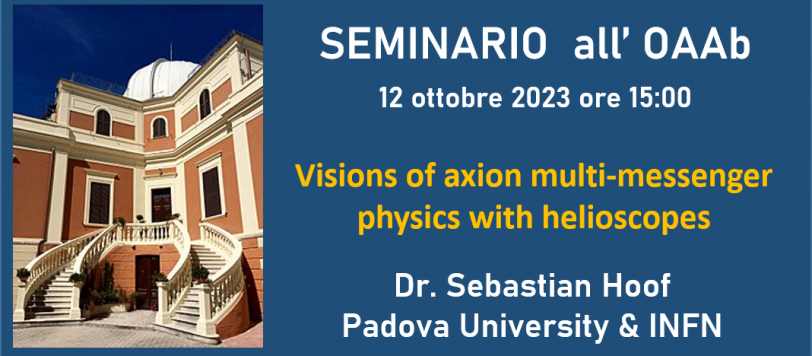

Giovedì 12 ottobre alle ore 15:00, il Dr. Sebastian Hoof dell’Università di Padova e INFN-sezione Padova terrà il seminario dal titolo “Visions of axion multi-messenger physics with helioscopes“.

Mercoledì 27 settembre alle ore 15:00, il Dr. Leonardo Tartaglia dell’INAF-OA d’Abruzzo terrà il seminario dal titolo “Il destino delle stelle più massive – un punto di vista osservativo”.
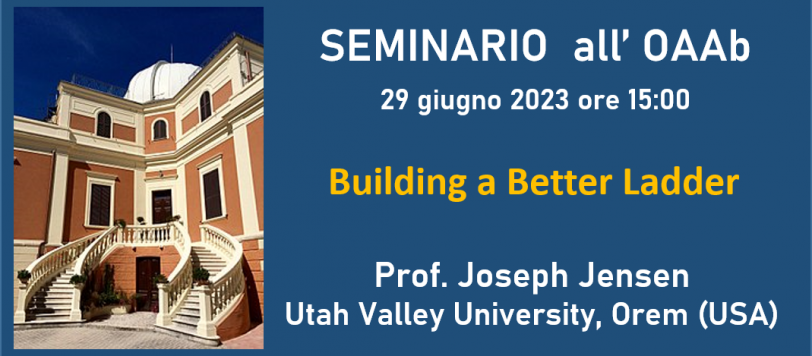
Giovedì 29 giugno alle ore 15:00, il Prof. Joseph Jensen della Utah Valley University, Orem (USA) terrà il seminario dal titolo “Building a Better Ladder“.
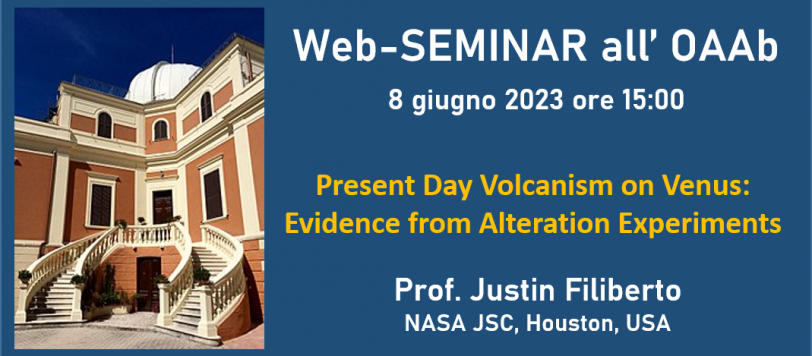
Giovedì 8 giugno alle ore 15:00, il Prof. Justin Filiberto, Responsabile del Research Office della Astromaterials Research and Exploration Science (ARES) Division presso il Johnson Space Center della NASA a Houston (USA), terrà il seminario dal titolo “Present Day Volcanism on Venus: Evidence from Alteration Experiments“.
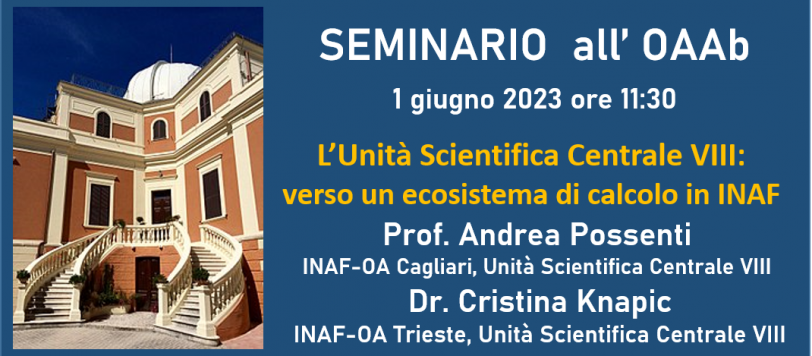
Giovedì 1 giugno alle ore 11:30, il Prof. Andrea Possenti dell’INAF-Osservatorio Astronomico di Cagliari e dell’Unità Scientifica Centrale VIII e la Dr Cristina Knapic dell’INAF-Osservatorio Astronomico di Trieste e dell’Unità Scientifica Centrale VIII, terranno il seminario dal titolo “L’Unità Scientifica Centrale VIII: verso un ecosistema di calcolo in INAF“.
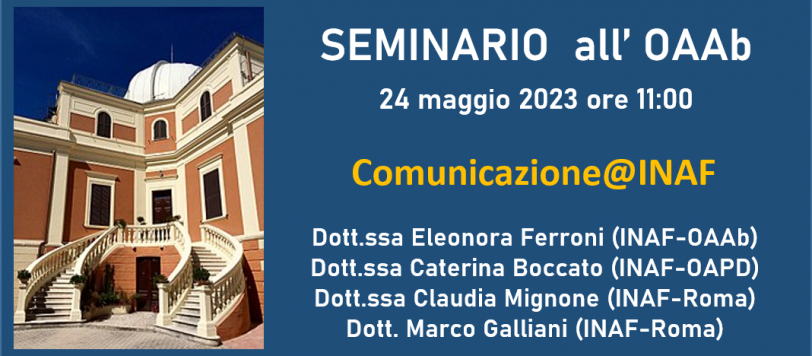
Mercoledì 24 maggio a partire dalle ore 11:00, i ricercatori dell’Ufficio Comunicazione dell’INAF terranno una serie di interventi su “Comunicazione@INAF“. Relatori: Dott.ssa Eleonora Ferroni, Responsabile Ufficio Stampa e Comunicazione dell’INAF-OA d’Abruzzo (chair) Dott.ssa Caterina Boccato, Responsabile della Didattica e Divulgazione dell’INAF Dott.ssa Claudia Mignone, astrofisica e divulgatrice scientifica della Struttura Comunicazione INAF Dott. Marco Galliani, […]
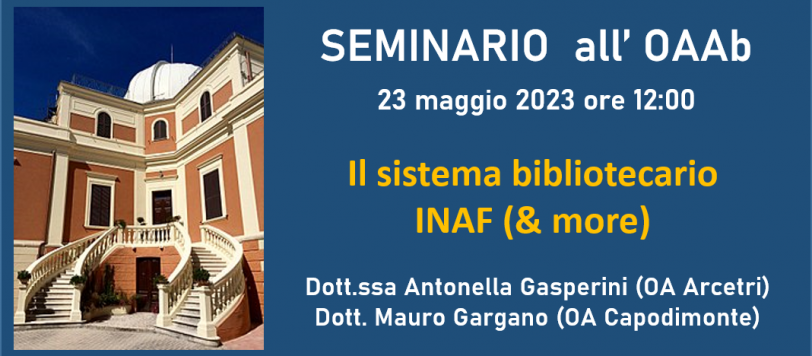
Martedì 23 maggio alle ore 12:00, la Dott.ssa Antonella Gasperini dell’INAF-Osservatorio Astronomico di Arcetri e il Dott. Mauro Gargano dell’INAF-OA Capodimonte, terranno il seminario dal titolo “Il sistema bibliotecario INAF (& more)“. Scarica la presentazione in pdf
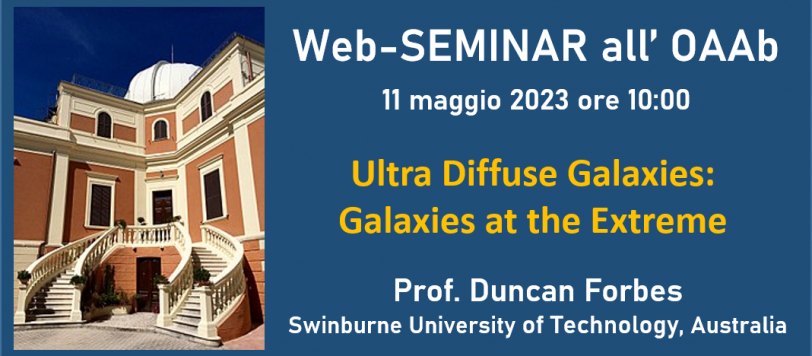
Giovedì 11 maggio alle ore 10:00, il Prof. Duncan Forbes della Swinburne University of Tecnology (Australia), terrà il web-seminar dal titolo “Ultra Diffuse Galaxies: Galaxies at the Extreme”.

Giovedì 27 aprile alle ore 15:00, il Dr. Piero D’Incecco dell’INAF-Osservatorio Astronomico d’Abruzzo, terrà il web-seminar dal titolo “Active volcanism on Venus: scientific implications and future perspectives through the Project “Analogs for VENus’s GEologically Recent Surfaces (AVENGERS)“.